Around here it was an amazing fall – full of fall wildflowers, late season pollinators, and beautiful fall colors. We were seeing and hearing reports of butterflies well into the first week of November! Then the seasons changed, almost overnight, as we were plummeted into early winter. However, I wouldn’t be surprised to get another warm spell or two before the end of the year.
Below are a few of the nature-related discoveries and observations we’ve made over the last couple of months.
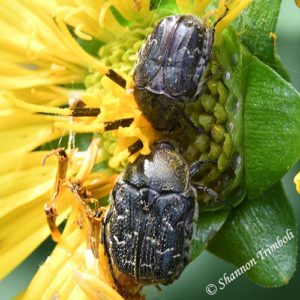
I found dark flower scarabs on many of our cup plants and goldenrods this fall. The dark flower scarab is a native beetle that can often be found on fall flowers. There’s apparently a lot that we don’t know about this species, especially its immature stages. The adults feed on pollen, tree sap, and rotting fruit. Unfortunately, they are often mistaken for Japanese beetles and are attracted to some of the baits used in Japanese beetle traps.
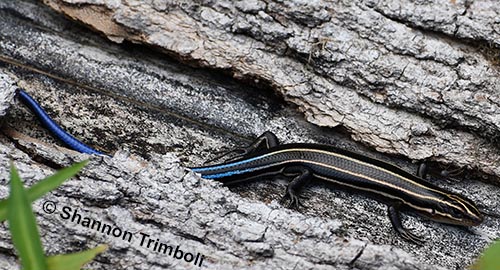
The young skinks loved sunning themselves on this fallen tree trunk this fall. Skinks are a type of lizard that have smooth scales. Three of our common skinks in the eastern U.S. are the five-lined skink, southeastern skink, and the broadhead skink. All three have beautiful blue tails when they are immature, which means the common name of “blue-tailed skink” can apply to any of them. (That’s what I grew up calling them and didn’t realize they could be different species until I was in college.)
The best way to tell the juveniles apart is to count the number of scales either on their labia (chin) or under their tail (but don’t mess with their tails too much or they’ll pop off). I still often call them blue-tailed skinks and don’t worry about which species it is unless I have a good reason to try to distinguish between them.
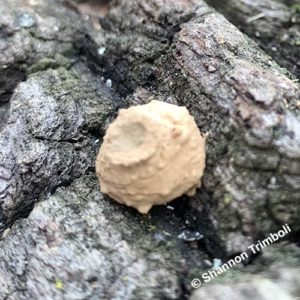
This tiny clay pot was made by a potter wasp. Potter wasps are solitary wasps and this nest was created by a single female wasp who collected water in her mouth, took it to a bare spot of soil, mixed the water and the soil together to make a speck of mud, and carried that dab of mud back to her chosen location. She made multiple trips as she shaped the pot one little dab of mud at a time.
After the pot was finished, she paralyzed and carried one or more caterpillars or beetle larvae (depending on the potter wasp species) back to the mud nest she just made. Right before sealing up the nest, she laid a single egg in the pot. Then she started the whole process over again somewhere else. Potter wasp nests can be found on twigs, branches, under leaves, on tree bark, and in a variety of other places. Once, we found one on the door frame going into our garage.
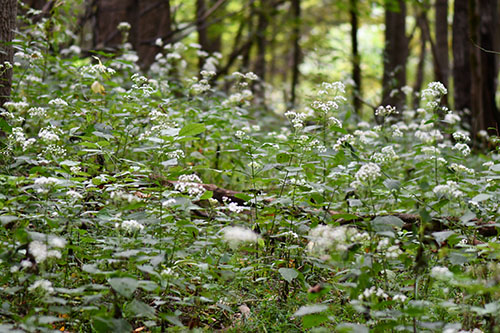
For over a month, the white snakeroot on our farm looked like large drifts of snow backing up to and slightly into our woods. I think the white snakeroot is beautiful growing in drifts like that, and always find it interesting to watch the insects that visit it. One general observation I’ve made is that some years it seems to attract mostly smaller bees, but other years (like this year) the larger bees also seem to visit it fairly frequently. I’d be curious to learn if that observation has been supported by scientific research. There are also some interesting stories related to white snakeroot and people. Anthony made a video about it, if you want to learn more about those stories.
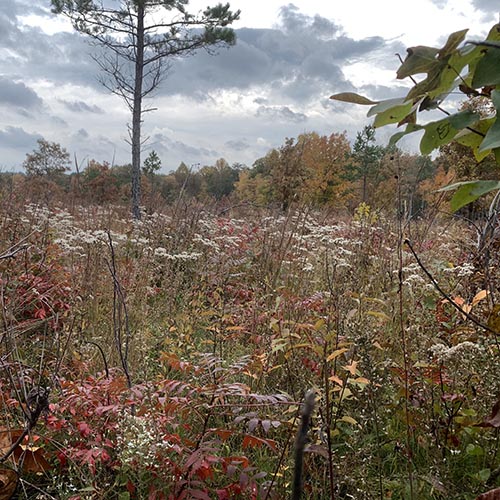
As I said before, the fall color was amazing this year. When we talk about fall colors, we are often thinking about the colors that we see on tree leaves, and there’s no denying that the trees around here put on a beautiful display. But, forests aren’t the only place to go to see beautiful fall colors. I visited a grassland restoration site in mid-October and was reminded just how beautiful the prairies, grasslands, and meadows can also be in the fall.
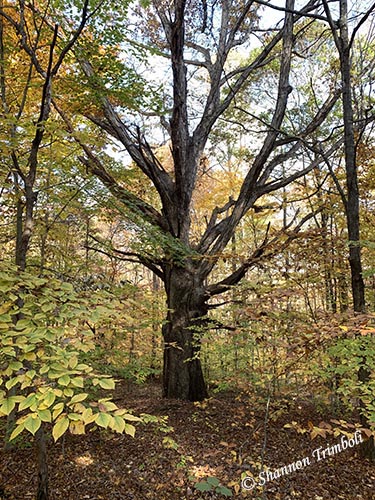
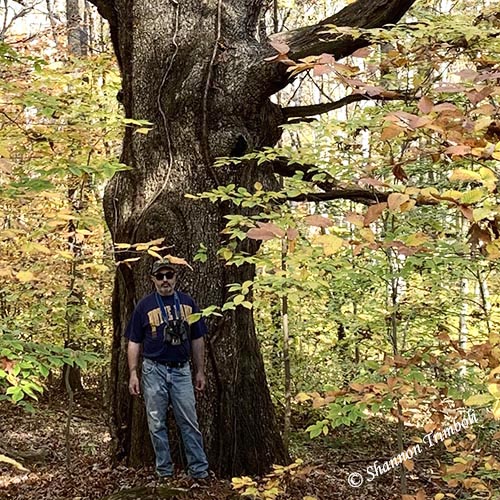
Recently, Anthony and I went hiking at one of the parks in our county and came upon this beautiful old white oak. It has been cored and documented as over 200 years old. Anthony is standing next to the trunk in the second picture to give a sense of scale so you can get a better idea of how big this tree is. Trees like this have a story to tell for those who know how to read it and are open to hearing it.
The large, wide-spread branches that start relatively low on the trunk indicate that this tree originally grew in a wide-open area where it could easily stretch out its limbs and leaves to gather the sunlight. Unlike the trees that you see growing around it now, this tree didn’t have to shoot up tall and straight in a race to the top of the forest canopy before it could put out branches and leaves to capture the sun’s energy. Originally, this tree was likely surrounded by a lush meadow / prairie / grassland that was dotted with other oak trees like this one to create what is known as a savanna.
The earliest historical records of this area support the story that this old white oak tells. Unfortunately, savannas and other grassland-related communities have mostly been erased from our landscapes, especially in the eastern U.S., and the few remaining ones are rapidly disappearing. I’d love to see what this area could look like if most of the smaller trees were removed and a few prescribed fires were run through here.
So, what interesting nature-related discoveries have you made in your yard and community over the last few weeks? I always enjoy hearing what you are finding too.
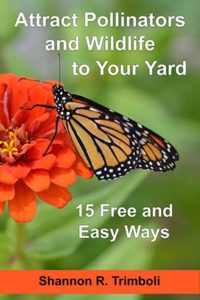
Do you want to make your yard more pollinator and wildlife friendly, but aren’t sure where to start?
Check out my book, Attract Pollinators and Wildlife to Your Yard: 15 Free and Easy Ways, for some easy, quick wins to get you started.

Backyard Ecology: Exploring Nature in Your Backyard
Nature isn’t just “out there.” It’s all around us, including right outside our doors. Hi, my name is Shannon Trimboli, and I am the host of Backyard Ecology. I live in southcentral Kentucky and am a wildlife biologist, educator, author, beekeeper, and owner of a nursery specializing in plants for pollinators and wildlife conservation. I invite you to join me as we ignite our curiosity and natural wonder, explore our yards and communities, and improve our local pollinator and wildlife habitat. Learn more or subscribe to my email list at www.backyardecology.net.

Leave a Reply